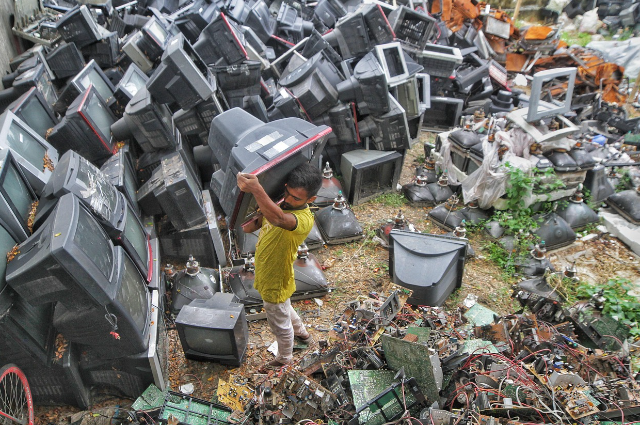
In the digital age, each house has many electronic devices, laptops, TVs, and countless accessories. While these innovations have redefined communication, work, and vacation, their rapid non-confidence fuel is one of the fastest-growing waste streams in the world: electronic waste, or e-waste. Although the Metropolitan City dominates the interaction around stability, the quiet reality is that small cities often absorb a large part of the closed units. The consumer runs this crisis through the electronics industry, especially with fast production cycles and global sales expansion. Investigation of the effect of e-waste dumping on small cities reveals an immediate requirement for both technical solutions and responsible business practices.
E-Waste dangerous? A technical observation
E-waste is not just scrapping metal—it is a very complex mixture of materials. A single smartphone includes:
- Precious metals: gold, silver, palladium, and copper.
- Dangerous elements: Lead in solder, mercury in backlights, cadmium in batteries, and brominated flame retardants in casing.
- Plastic and glass: Recycling, but it is rarely handled in an environmentally friendly way.
When units are incorrectly dumped in small cities, toxins are contaminated in groundwater, soil, and air. Unlike cities with partial recycling facilities, rural and semi-urban communities lack safe settlement. Especially for children and low-income workers by reducing informal methods such as open burning, acid bath, and manual dismantling of exposure.
Why do small cities bear a hidden burden?
Many systemic factors make small cities weak:
- Weak regulation of enforcement—national laws on the management of e-waste are often present, but rarely apply outside larger cities.
- Low settlement cost — informal recycling in small towns accepts the abandonment of electronics at a minimum cost, and allows them to seek cheap solutions for urban companies.
- Lack of consciousness, the community often considers e-waste to be regular waste, with its long-term environmental and health risks.
- Industry printing — consumer electronics companies release updated models annually, and increase a rapid replacement cycle that overwhelms waste systems.
Case analysis: Consumer electronics industry.
The consumer electronics sector — smartphones, laptops, tablets, and TVs makes the largest amount of e-waste globally. According to the global e-waste monitor, approximately 60 million tonnes of e-waste will be generated worldwide in 2022, and absorbed silently and with inconsistent ownership interest in small cities in Asia and Africa.
Effects on small towns
Environmental harm: Small agricultural cities face soil pollution, reduced crops, and threaten food safety.
Public health: Informal recycling exposes workers to heavy metals, causing respiratory troubles, most cancers, and neurological harm.
Financial deformation: While it appears to eliminate workshops, they remain dangerous, poorly paid, and unstable.
By studying how large companies address—or fail to address—the problem, we can better understand the role of industry responsibility for the defence of small communities.
Business approach: Progress and holes
- Apple: Robot recuperation, but limited to getting admission. Apple has advanced superior structures, which include Daisy Robot, which separates iPhones and gets rid of precious materials, including cobalt and rare earth elements. The corporation additionally runs an alternative application that encourages customers to go back to the vintage system. Limit: These solutions are focused on evolved markets. Small cities in countries such as India or Nigeria rarely benefit, as gathering centres are absent and logistics are expensive. Apple's innovation is technically impressive, but geographically narrow.
- Dale: Circular Economics and Partnership. Dell has invested heavily in the circular economy model, which includes recycled plastic and metals in new equipment. U.S. Restriction: Without strict inspection, recycling of small trips is often an insecure, unsafe practice that transfers risk to local workers from companies.
- HP: decentralized collection model. HP has run a decentralized e-waste collection in Africa, especially in Kenya. By collaborating with local entrepreneurs, the company ensures that e-waste cartridges, laptops, and accessories are collected and sent to certified directors. Strength: This model directly includes small-town communities, and it creates safe employment opportunities. However, increasing such an initiative globally is a challenge.
Technical solution for safety in small cities.
To reduce the burden hidden in small cities, solutions should combine technological innovation at the ground level.
- Decentralized recycling devices: In semi-urban regions, small-scale, modular recycling features can be hooked up. They use advanced credit score and separation strategies to safely remove metals without poisonous burns. For instance, hydrometallurgical procedures allow metals to be recycled using controlled chemical baths, lowering air pollutants.
- Blockchain-based e-waste tracking: By entering a particular virtual ID into digital products, agencies can detect gadgets from production to disposal. This ensures responsibility and discourages illegal dumping in small cities.
- ECO design for durability: Consumer electronics companies should use modular designs - for example, changeable batteries and upgradable components - so the devices last longer. Fairphone, a small competitor, shows this theory, but industry veterans should use it broadly.
- Community Awareness Program Training of residents in small towns to handle safe e-waste with government-sponsored collection stations can prevent informal combustion and resolution.
One way forward: Shared responsibility.
The hidden effect of the dumping of e-waste in small cities reflects an imbalance between global profit and local pain. The consumer electronics industry has resources and expertise to overcome the crisis, but it often limits the solution to rich markets. In order for changes to be effective, Governments should implement equally extended productive responsibility (EPR) in rural and urban areas. Companies need to score solutions such as Apple's robotic recovery and decentralized collections of HP in small cities around the world. The community should be strengthened with knowledge and safe employment options in recycling chains. Conclusion: E-waste in small cities is more than an environmental issue-it is a public health, economic, and moral challenge. The consumer electronics industry, with its tireless innovation rate, cannot ignore the costs of weak societies. Small cities should not remain an invisible dumping place for the digital world. With technical solutions, corporate responsibility, and local authority, we can ensure that the progress is not at least not coming at the expense of those equipped to carry the burden.
